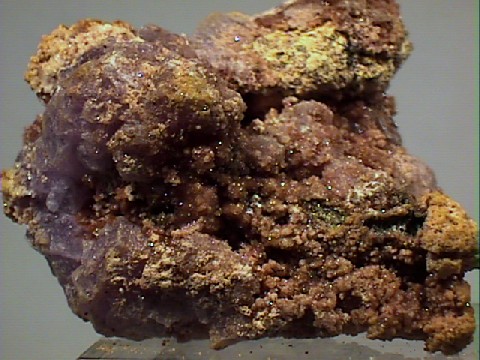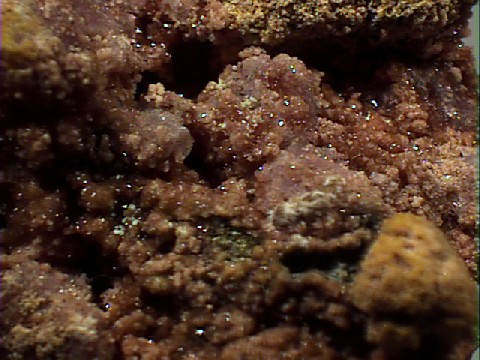 THE MINERAL COPIAPITE
THE MINERAL COPIAPITE
- Chemistry: (Fe, Mg)Fe4(SO4)6(OH)2 - 20H2O, Hydrated Iron Magnesium Sulfate Hydroxide.
- Class: Sulfates
- Group: Copiapite
- Uses: Only as mineral specimens.
Specimens
Copiapite lends its good name to a group of similar triclinic, hydrated, iron sulfates called the Copiapite Group.
Although not a lot of creativity went into their names, the members of this group are all distinct minerals.
The general formula of this group is AFe4(SO4)6(OH)2
- 20H2O, where A has a positive 2 charge and can be either magnesium, iron, copper, calcium and/or zinc.
The formula can also be B2/3Fe4(SO4)6(OH)2
- 20H2O, where B has a positive 3 charge and can be either aluminum or iron.
These are the members of the Copiapite Group:
PHYSICAL CHARACTERISTICS:
- Color is yellow, orange, sulfur-yellow, golden-yellow, greenish-yellow to ocher.
- Luster is pearly to dull.
- Transparency: Specimens are translucent to opaque.
- Crystal System is triclinic: bar 1.
- Crystal Habits include aggregates of small platy or scaly masses, encrustations and granular masses. Individual crystals are rare.
- Cleavage is perfect in one direction.
- Fracture is uneven.
- Hardness is 3.5 - 3.
- Specific Gravity is approximately 2.1 (light even for translucent minerals).
- Streak is pale yellow.
- Other Characteristics: Dissolves in water, is non-flourescent and has a metallic taste.
- Associated Minerals include pyrite, other iron sulfides and other secondary minerals.
- Notable Occurrences include Copiapo (hence the name), Atacama, Chile; France; Spain; Germany; Utah, California and Nevada, USA.
- Best Field Indicators are solubility, density, color, non-flourescence and taste.



